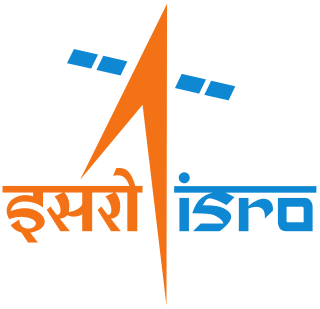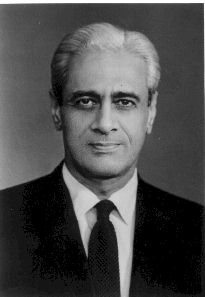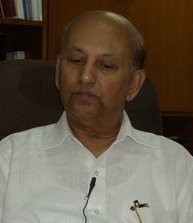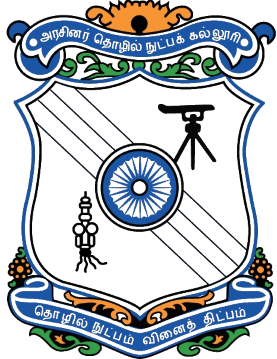Related Research Articles

Avul Pakir Jainulabdeen Abdul KalamBR was an Indian aerospace scientist and statesman who served as the 11th president of India from 2002 to 2007. Born and raised in a Muslim family in Rameswaram, Tamil Nadu, he studied physics and aerospace engineering. He spent the next four decades as a scientist and science administrator, mainly at the Defence Research and Development Organisation (DRDO) and Indian Space Research Organisation (ISRO) and was intimately involved in India's civilian space programme and military missile development efforts. He thus came to be known as the Missile Man of India for his work on the development of ballistic missile and launch vehicle technology. He also played a pivotal organisational, technical, and political role in India's Pokhran-II nuclear tests in 1998, the first since the original nuclear test by India in 1974.

Indian Space Research Organisation is India's national space agency. It serves as the principal research and development arm of the Department of Space (DoS), overseen by the Prime Minister of India, with the Chairman of ISRO also serving as the chief executive of the DoS. It is primarily responsible for space-based operations, space exploration, international space cooperation and the development of related technologies. The agency maintains a constellation of imaging, communication and remote sensing satellites. It operates the GAGAN and IRNSS satellite navigation systems. It has sent three missions to the Moon and one mission to Mars.

Satish Dhawan was an Indian mathematician and aerospace engineer, widely regarded as the father of experimental fluid dynamics research in India. Born in Srinagar, Dhawan was educated in India and further on in United States. Dhawan was one of the most eminent researchers in the field of turbulence and boundary layers, leading the successful and indigenous development of the Indian space programme. He succeeded M. G. K. Menon, as the third chairman of the Indian Space Research Organisation (ISRO) in 1972. The second launch pad of ISRO, Satish Dhawan space centre is named after him. He is greatly regarded as the man behind A. P. J. Abdul Kalam.

Udupi Ramachandra Rao was an Indian space scientist and former chairman of the Indian Space Research Organisation. He was also the Chairman of the Governing Council of the Physical Research Laboratory at Ahmedabad and Nehru Planetarium at Bengaluru and chancellor of the Indian Institute for Space Science and Technology (IIST) at Thiruvananthapuram. He is known as "The Satellite Man of India". He pioneered India's first satellite launch Aryabhata in 1975.

Mylswamy Annadurai is an Indian scientist working as vice president for Tamil Nadu State Council for Science and Technology, Chairman, Board of Governors, National Design and Research Forum. He is often dubbed as the "Moon Man of India".

Government College of Technology, Coimbatore (GCT) is an autonomous state-funded engineering college located in Coimbatore, Tamil Nadu, India. It is affiliated to Anna University.
G. Madhavan Nair is an Indian space scientist and a former chairman of the Indian Space Research Organisation, and Secretary to the Department of Space, Government of India. His tenure saw commencement of Indian Human Spaceflight Programme and launch of extraterrestrial exploration mission Chandrayaan-I.

RISAT (Radar Imaging Satellite) is a series of Indian radar imaging reconnaissance satellites built by the Indian Space Research Organization (ISRO). They provide all-weather surveillance using synthetic aperture radars (SAR).
RISAT-2, or Radar Imaging Satellite-2 was an Indian radar imaging reconnaissance satellite that was part of India's RISAT programme. It was procured from Israel Aerospace Industries (IAI) and successfully launched aboard a PSLV-CA launch vehicle at 01:15:00 UTC on 20 April 2009 from the Second Launch Pad at the Satish Dhawan Space Centre.

Radar Imaging Satellite 1 or RISAT-1, was an Indian remote sensing satellite built and operated by the Indian Space Research Organisation (ISRO). The second RISAT satellite to be launched, it used a C-band 5.35 GHz synthetic-aperture radar (SAR) for Earth observation.

Tapan Misra is an Indian scientist who has been the Director of Space Applications Centre and Physical Research Laboratory in ISRO. He later became Senior Advisor to the Chairman, ISRO.
Nilamber Pant is an Indian space scientist, a former member of the Space Commission of India and a pioneer of satellite based communication and broadcasting in India. He served at the Satish Dhawan Space Centre and the ISRO Satellite Centre before becoming the vice chairman of the Indian Space Research Organization (ISRO). The Government of India awarded him the fourth highest Indian civilian honour of Padma Shri in 1984.

Sivan Kailasavadivu is an Indian aerospace engineer who served as the Secretary of the Department of Space and Chairman of the Indian Space Research Organisation(ISRO) and Space Commission. He has previously served as the Director of the Vikram Sarabhai Space Center and the Liquid Propulsion Systems Centre.

The Dr. A. P. J. Abdul Kalam Award, named after the 11th President of India and aerospace scientist A. P. J. Abdul Kalam, is awarded by the Government of Tamil Nadu in recognition of contributions on scientific development, humanities and students' welfare.
Madhavan Pillai Ramakrishna Kurup was an Indian rocket scientist and the founder of the first solid rocket propellant plant in India at the Vikram Sarabhai Space Centre. He is known to have contributed to the successful launching of the Augmented Satellite Launch Vehicle (ASLV) as the director of the VSSC centre in Thiruvananthapuram. The Government of India awarded him the fourth highest civilian award of Padma Shri in 1990.

EOS-04 or Earth Observation Satellite - 04 is an Indian Space Research Organisation Radar Imaging Satellite designed to provide high-quality images under all weather conditions for applications such as Agriculture, Forestry & Plantations, Soil Moisture & Hydrology and Flood mapping. It is a follow on to RISAT-1 satellite with similar configuration. The satellite is developed by the ISRO and it is the sixth in a series of RISAT satellites.

The Defence Space Agency (DSA) is an integrated tri-services agency of the Indian Armed Forces headquartered in Bengaluru, Karnataka, India. The agency is tasked with operating the space-warfare and Satellite Intelligence assets of India. The DSA draws personnel from all three branches of the Armed Forces.
RISAT-2B, or Radar Imaging Satellite-2B is an Indian radar reconnaissance satellite that is part of India's RISAT programme and the third satellite in the series. It is built by Indian Space Research Organisation (ISRO) to replace RISAT-2.

Nilesh M. Desai is an Indian engineer and space scientist. He is known for his work in the development of microwave radar satellites, the Indian Regional Navigation Satellite System (NAVIC), quantum key distribution, and the third Indian lunar exploration mission, Chandrayaan-3. He assumed the directorship of the Space Applications Centre (SAC) in Ahmedabad, on January 1st, 2021.
References
- ↑ "ISRO Expert Valarmathi 1st Recipient of Kalam Award". New Indian Express. Archived from the original on 18 August 2015. Retrieved 16 August 2015.
- ↑ "Proud moment for woman scientist". Deccan Herald. Archived from the original on 24 September 2015. Retrieved 16 August 2015.
- ↑ "'Daughter of soil' makes Ariyalur proud". The Hindu. Archived from the original on 10 March 2017. Retrieved 16 August 2015.
- ↑ "Meet: The woman behind Risat-1". India Times. Archived from the original on 24 September 2015. Retrieved 16 August 2015.
- ↑ "Kalam award for ISRO scientist". The Hindu. Archived from the original on 26 January 2021. Retrieved 16 August 2015.